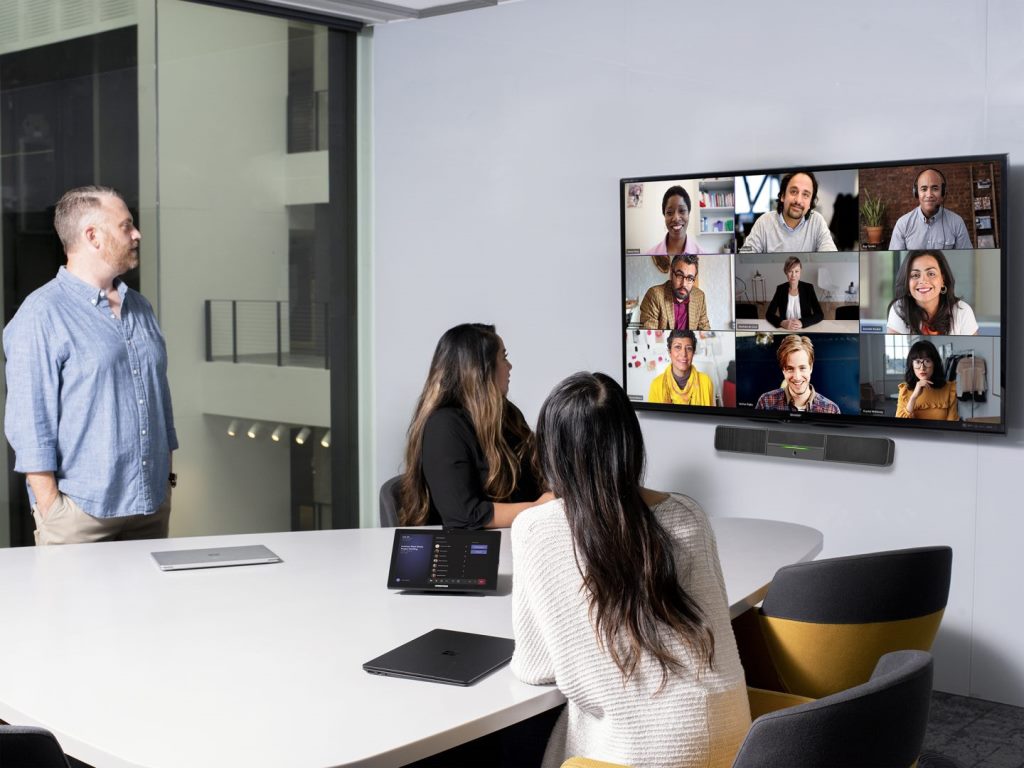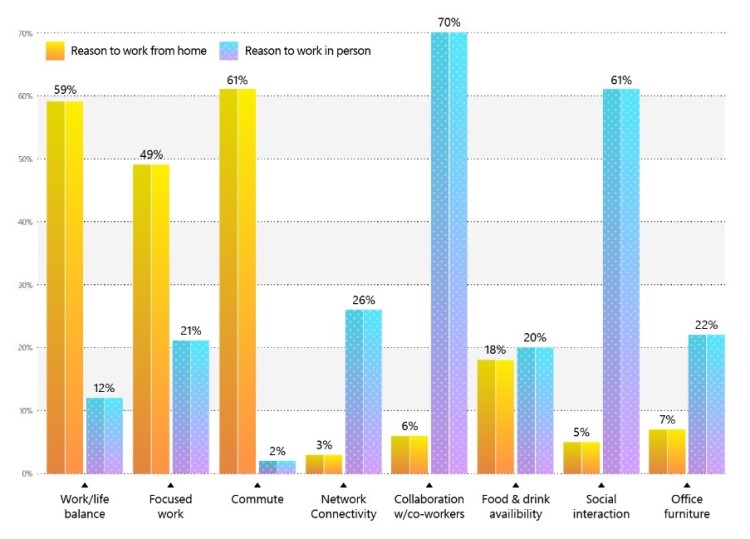September, 27, 2021

By Jared Spataro, CVP for Modern Work
Satya Nadella and Ryan Roslansky, the CEO of LinkedIn, recently sat down to talk about the key secular trends they’re seeing as people and organizations everywhere adjust to hybrid work. Their conversation is part of an effort between Microsoft and LinkedIn to help leaders and their teams navigate this new world of work, and here I’ll share more about the trends we’re seeing, and the data behind them.
As Satya and Ryan mentioned, the evolving Delta variant is compelling many of us to adjust plans for reopening worksites. It’s a stark reminder that this is the new normal. Our ability to come together will ebb and flow. In fact, this week we had planned to fully reopen Microsoft’s own Redmond headquarters. Now we know we’ll need to wait to reopen fully – and we’ll need to be agile and flexible as we look to the data and make choices to protect employee health, safety and wellbeing.
We’ve heard many business leaders come forward with strong opinions on how, when and where people should work in a hybrid world. At Microsoft and LinkedIn, we want to take a learn-it-all approach, and lead with data rather than dogma. And we’re incorporating flexibility into our decision-making. Because in uncharted territory, we need to be able to shift and adjust as data and research offer new insights to guide our way.
The Hybrid Work Paradox and The Great Reshuffle
A report on our Work Trend Index shares what we’re learning from Microsoft employees in over 100 countries around the world. Employee surveys tell us that while hybrid work is complex, embracing flexibility, different workstyles and a culture of trust can help us all navigate it successfully.
In a year when we sent 160,000 people home to work and remotely onboarded 25,000 new employees, the share of people who report feeling included at Microsoft is at an all-time high of 90%. According to surveys, employee confidence and support from our managers is also at an all-time high. While there is still so much more we can do in our culture journey at Microsoft – and we’d love to see these numbers even higher – this data show that we don’t have to be physically together to feel like we’re in it together.
But there’s no guarantee that these positive trends will continue in hybrid and difficulties remain. As we navigate remote work during a pandemic, our employee surveys show continued challenges to satisfaction with work-life balance and team connection.
While we hope hybrid work will help us improve in these areas, finding the balance will be complex. Our ongoing research shows employees crave more in-person time with their team but wish to keep the flexibility of remote work. And every employee is different. 58% of employees who plan to spend the most and least time in-office are doing it for the same reason: more focused work. And there are gaps to fill—managers plan to spend a higher share of their time in-office than non-managerial employees (45% vs. 39%). Moreover, employees surveyed plan to go into the office more than managers expect. This complexity is what Satya calls the Hybrid Work Paradox.

Different Styles, Different Needs
Chart shows reasons Microsoft employees cite for working in-person and at home. Some employees cite work-life balance, focus time, and collaboration as reasons to go into the office, while others cite those same things as reasons to stay home.
Solving the hybrid work paradox will be the challenge of the decade. We need policies and technology tuned for flexibility, but policies and technology alone are not enough. Every leader must also ask: How do I rebuild social capital and connection back to mission, culture and team? How do I help people prioritize individual wellbeing and work in sustainable ways? As Satya has said: "Our new data shows there is no one-size-fits-all approach to hybrid work, as employee expectations continue to change. The only way for organizations to solve for this complexity is to embrace flexibility across their entire operating model, including the ways people work, the places they inhabit and how they approach business process."
All of this will be key to attracting and retaining talent at a moment that our colleagues at LinkedIn are calling the “Great Reshuffle.” As companies rethink their working models, cultures and company values, employees are rethinking not only how and where they work, but why.
Ultimately, there is great possibility in these changes. Employers and employees have an opportunity to build new relationships grounded in shared values and a common mission. And more people will be doing work that brings them fulfillment, leading to greater success for organizations who engage their employees with compassion and trust. But the data also underscores the imperative for business leaders to transform themselves to attract and retain top talent as employee expectations evolve.
Taken together, the Hybrid Work Paradox and the Great Reshuffle are creating fundamental changes in the global labor market. Ultimately, no one can predict how things will shake out. But history has shown us that there is always opportunity in turbulent times.
Companies that are adaptable and able to continuously innovate will have the advantage. To really compete, however, they’ll need to enable sustainable productivity for their employees. Right now, the power has shifted from employer to employee and people will vote with their feet. As conditions change, this pendulum of power will continue to swing in both directions, but one thing remains constant: those companies with a better employee experience for all employees – from the virtual boardroom to the factory floor -- will be the ones to attract and retain better talent.
Video Story